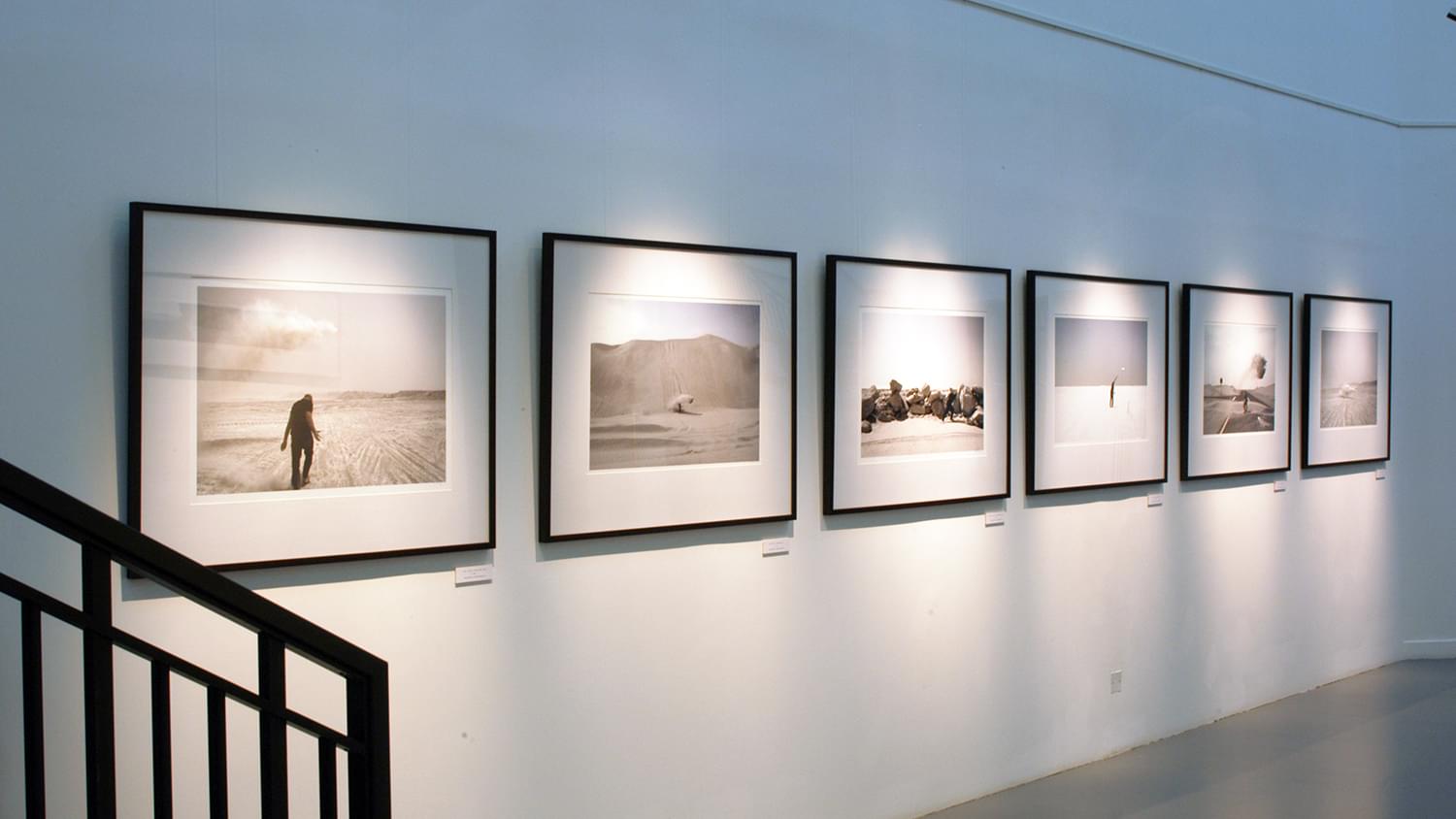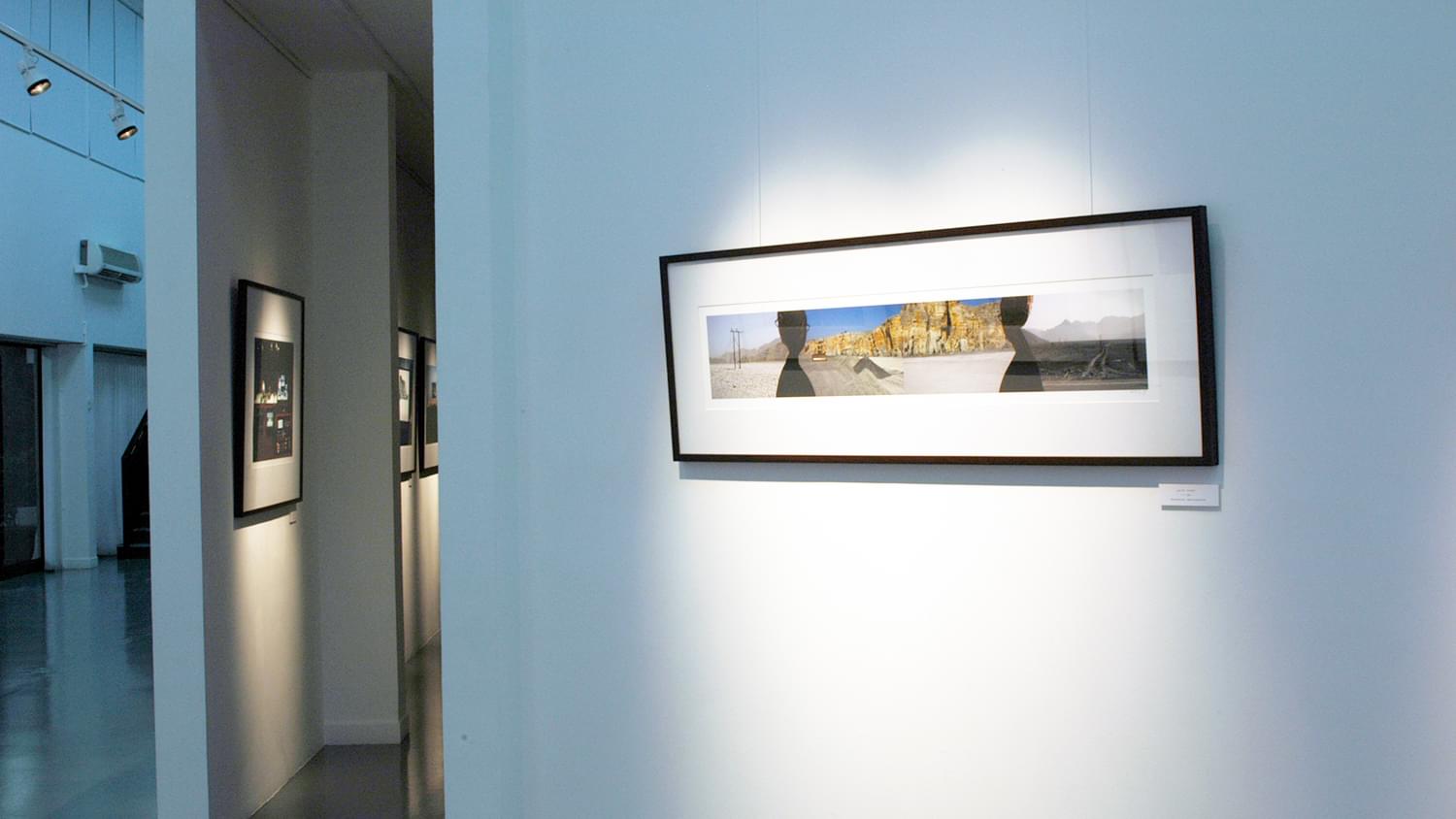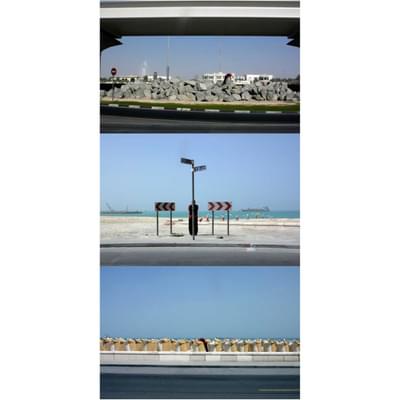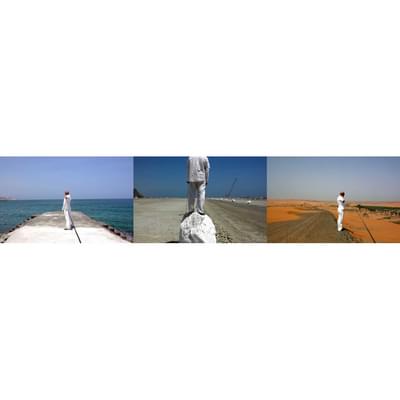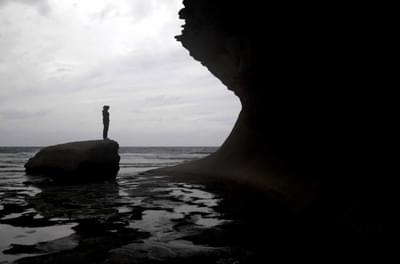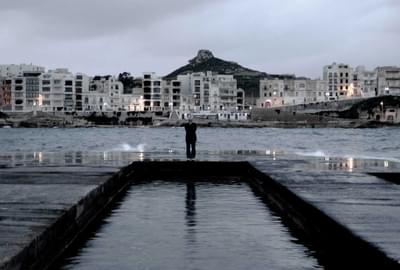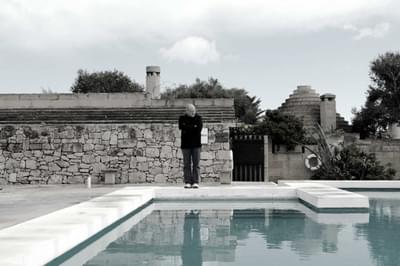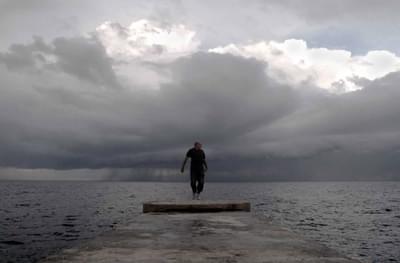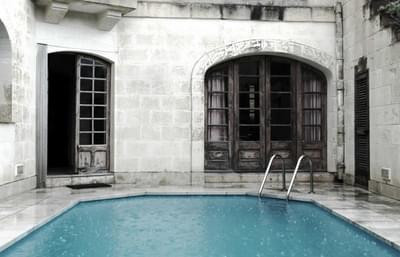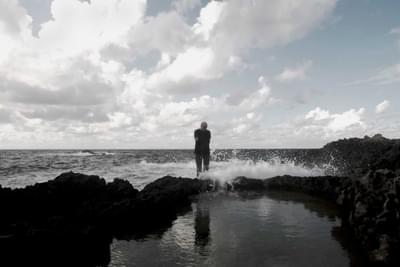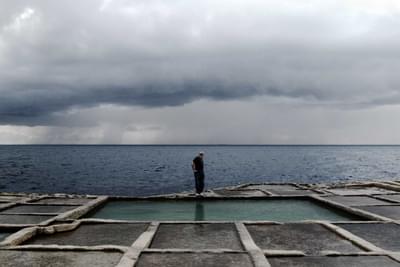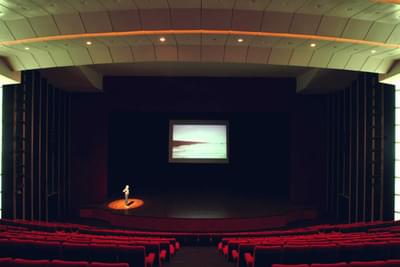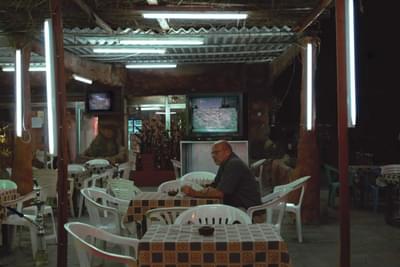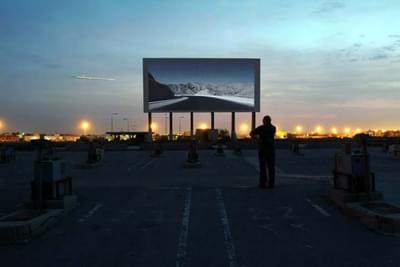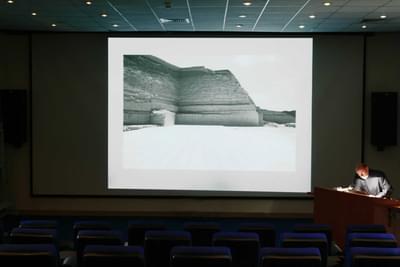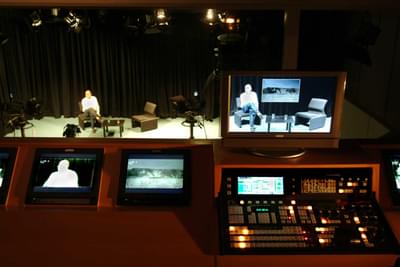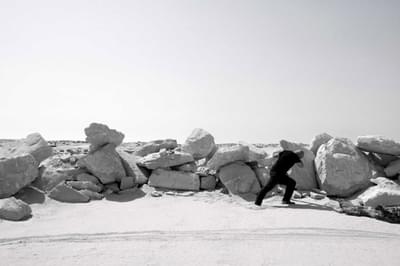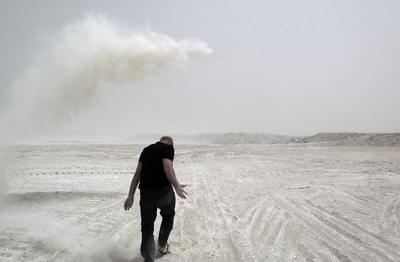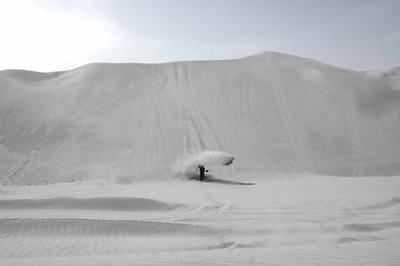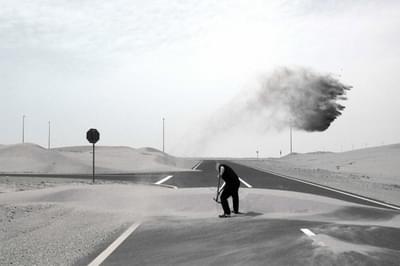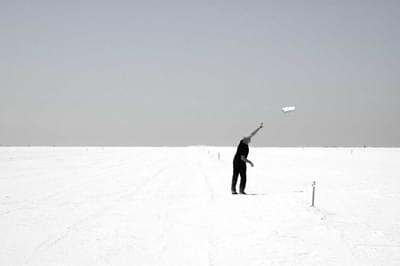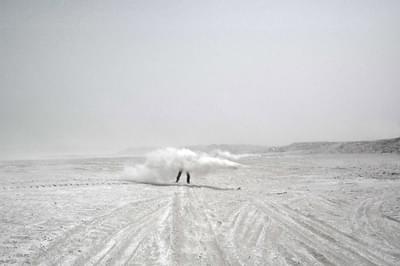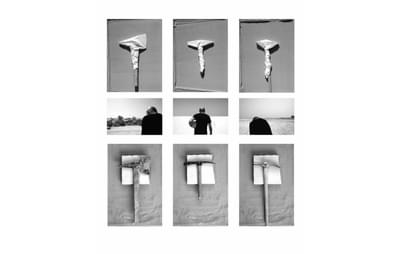"Islander, Mark Pilkington's exhibition of photographs, tells a story backwards. It unfolds with one protagonist in a silent monologue with his world. A white middle age male in various struggles. All of them are self-inflicted, at least self-imposed, definitely self-construed. This man has decided that he has choices to make. He is deliberate. He moves slowly. No-one is watching him except the lens. We have to remember: This is photography! What you see was in front of the lens, even if questions of authenticity linger.
What are the choices? Give in to the world or change it? Revive your instinctual self, accept nature's rule and let things go? Or refine your mental judgment, study conditions, select your course of action. Pick the right tools. Make order. Build society. Get closer to the way God wants you to be?
So the islander sets out to build culture. Measures earth and moves it. Wrestles with material and takes care of equipment. He studies mechanics and physics and speculates about causes and effects, about degradation and genetic modification. He participates in academic discourse and balances his contribution according to time-honoured criteria. And in doing so, he discovers that his body is the island of two worlds. One is natural and physical and tires easily. It is the objective, measurable realm. It exists in time and place. The other is internal and subjective. It is always mediated and cultural. It thrives on ambiguities and contradictions. The islander learns, to his astonishment, that these two worlds are not separable. That is the human condition, incomplete forever evolving in the give and take of the forces that shape us and the shapes that we force.
In many ways, Pilkington's islander work is a challenge to postmodernist doctrine. He borrows some forms from the past (Renaissance compositions, Rodin gestures), but stoically pursues a monolithic form. He insists on topographic context, even if it remains anonymous, bu explores his medium as if it were freed from the responsibility to index reality. He veils his physiognomy and dresses in uniform garb, but eagerly provides the future with prosthetic memory of himself.
The places he chooses are public to the core, but the self intrudes everywhere in spectacular privacy. The stages he set are virtual, the islander lies in reverse and the gallery becomes the place to tell the story of a constructed past. He eclectically employs digital media, earth art, performance, even concept art (in his meta-literary scheme of backward narration), but has disdain for popular culture. He takes note of the contemporary environment, but it is not the metropolis he embraces. If his art is concerned with differences, it is not the difference of gender, class, race or age. To the contrary, the islander is concerned with universals and a homogeneity that defies diversity. And in this realization, islander fundamentally defines himself and replaces itself. The art is self. And self is art." (Commentary III from exhibition catalogue by Martin Giesen)
Share this page:
About Mark Pilkington
Mark Pilkington studied Fine Art before completing a MA in Photography at the Royal College of Art, London. He has taught photography at a number of UK colleges before moving to the UAE in 1997. He is Full Professor at the College of Architecture, Art and Design, The American University of Sharjah, where he teaches both practical and history of photography. Mark has exhibited in the UK, notably at the Photographers Gallery, National Portrait Gallery, Barbican in London and Format International P...

